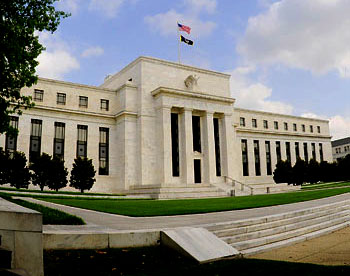If you read my epic post on NGDP targeting this morning, you’ll recall that one of its virtues is that it automatically encourages higher inflation when the economy turns down and automatically encourages lower inflation when the economy is heating up.  This is good for purely economic reasons, since low real interest rates help spur growth during recessions, but Steve Randy Waldman writes today that it has moral benefits too, including this one:
This is good for purely economic reasons, since low real interest rates help spur growth during recessions, but Steve Randy Waldman writes today that it has moral benefits too, including this one:
A second moral benefit is that under (successful) NGDP targeting, any depressions that occur will be inflationary depressions….If depressions occur even while the NGDP path is stabilized, then they will reflect some failure of supply or technology. Our aggregate investment choices will have proved misguided, or we will have encountered insuperable obstacles to carrying wealth forward in time. It is creditors, not debtors, whom we must hold accountable for patterns of aggregate investment. There always have been and always will be foolish or predatory borrowers willing to accept a loan that they will not repay. We rely upon discriminating creditors to ensure that funds and resources will be placed in hands that will use them well.
….I do not relish inflation for its own sake, or advocate punishing creditors because they are rich and the tall poppies must be cut. But if, despite NGDP stabilization, real GDP cannot be sustained, someone has to bear real losses. There are only two choices: current producers can be taxed in order to make creditors whole in real terms, or past claims can be devalued so that losses are borne at least in part by creditors. In my view, the latter is the only moral choice, and the only choice that creates incentives for investors to maximize real-economic return….
In theory — the theory being that the Fed is really, truly, rock-solid committed to NGDP level targeting and everyone knows it — creditors understand that they’re going to pay the price for foolish loans. They might become insolvent, obviously. But even if they don’t, they understand up front that if the economy tanks they’re going to see the value of their loans erode because the Fed will temporarily engineer higher inflation. One way or another, they’re going to pay the piper, and this will make them more careful in their lending practices.
Now, I’ll confess that I have my doubts about that last sentence. Thinking Minskyishly, I suspect that creditors are just bound to act stupidly at the height of economic booms. If the fear of bankruptcy doesn’t give them pause, a little bit of inflation won’t either. As Steve says, they might deserve to take a hit more than, say, taxpayers or borrowers, but I doubt that the prospect of future inflation will change their behavior much.
No, the real virtue of NGDP targeting, if it works, is that it provides a good set of rules for countercyclical monetary policy, which should prevent economic booms from getting too far out of hand in the first place. But I think a bit of caution is still in order here. The Fed, along with other central banks, has been searching for a good monetary policy rule ever since the ancien régime collapsed in the post-Bretton Woods era, and so far the search for something truly automatic has been fruitless. NGDP targeting is the latest flavor of the day, and who knows? Maybe it really is the magic bullet. But while it might be a pretty good rule, something tells me that, like any rule, it will somehow be deemed inadequate during some future crisis. There is, after all, always the legitimate question of what the proper level target should be (it depends on population growth, technological growth, productivity growth, etc.) and there are measurement problems too, even for something as simple as NGDP. Finding some kind of mechanical monetary rule that automatically produces stable growth is sort of a Holy Grail among a certain set of economists, but we’re probably not going to find one anytime soon.
In the meantime, though, it’s possible that NGDP targeting is the best bet we have. It’s certainly worth all the attention it’s getting.














